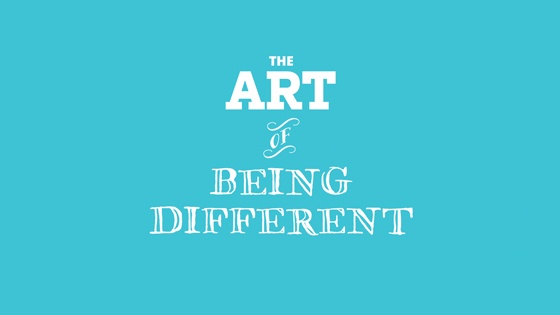11 Conversion-Focused Emails Every Retailer Should Send This Holiday

Last year, for the first time ever, more people shopped online on Black Friday than in stores. Take advantage with a smart segmentation and content strategy.
Looking to get even more out of your email lists this holiday?
Holiday email marketing is more than sending a few promotional emails. It’s an aggressive strategy of delivering personalized content and opportunities to your current and prospective customers.
You can get a lot more from your lists if you apply a little strategy, ingenuity, resourcefulness, and creative thinking. To help you get the ball rolling, here are 11 conversion-focused emails every retailer should send out this holiday to drive more revenue from the channel.
1. The Gift-Buyer Bring Back Email
The Segment: Previous Year Holiday Buyers
The Strategy: Craft an email that feels personal to this shopper. Use their first name in the subject line, and lead with messaging about their purchase the previous holiday.
Show related products to the previous purchase, similar products, or gifts within the price point of the previous purchase. If you have a product recommendation engine, use it to your advantage by creating a dynamic template. But if not, you can still create a few templates and manually pull the content.
Why It Works: In ecomm email marketing, this is the “low-hanging fruit.” A bring-back to this segment is a reminder of the positive experience they had the year prior, helping the recipient overcome the “what will I buy” barrier.
2. The “Why Shop With Us This Holiday” Campaign
The Segments: Subscribers, First-Time Purchasers, Repeat Purchasers
The Strategy: Convert subscribers and previous customers into holiday revenue by showcasing the value of your online shopping experience and product offerings over a four-part email series. You should quickly portray product variety, shipping, gift wrapping services, and customer reviews to position your site or store as a convenient “win-win” shopping option.
For best results, link out to a specially created landing page that positions your brand as the ultimate holiday shopping solution for busy shoppers.
Why It Works: Research shows that over ½ of shoppers are open to buying from a new retailer.
3. Shipping Cut-Off Reminders
The Segments: Previous Year Holiday Buyers, Repeat Purchasers
The Strategy: Shipping reminders should be a critical component of your holiday email strategy. Establish the last order date for a guaranteed December 24th delivery, and plan a series of emails leading up to that date. We recommend sending an email at the following times:
- 10 days before cutoff date
- 5 days before cutoff date
- 3 days before cutoff date
- 1 day before cutoff date
- 12 hours before cutoff time
Consider adding last minute gift options, like digital gift cards to your email as well.
Why It Works: Research shows that shoppers are motivated and incentivized by cut-off dates. 86% of shoppers say that free shipping is important or very important to them.
4. Gift Card Promos
The Segments: Loyal Customers, Brand Evangelists
The Strategy: Gifts cards are a creative way to increase online sales and acquire new customers to your brand, but retailers often neglect gift card messaging in their email strategy.
Rather than burying your gift cards in a product-focused email, send an email that places them front and center. Provide messaging around the types of gifts that you offer to convey how the diversity of your product line makes a gift card to your store or ecomm site a great gift. Consider testing digital gift cards this holiday to target millennial and mobile shoppers (an especially useful option for last-minute shoppers).
Why It Works: About 81% of Americans will purchase at least one gift card during the holiday season. But there’s more—studies also show that gift card recipients are more likely to purchase items at full-price, creating more margin for the brand.
5. Abandoned Cart Emails
The Segment: None, triggered email.
The Strategy: Send a personalized email with a picture of the product. Lead with a “you forgot something” message and encourage the user to purchase with a small incentive.
For best results, send a reminder email within 24 hours of cart abandonment, with a simple or witty reminder message to draw the shopper back. If the recipient does not purchase from the first email, send a second email 24-48 hours after the abandonment with a 10% off call to action.
Why It Works: $4 trillion in abandoned merchandise is left each year in ecomm shopping carts. 54% of shoppers will purchase products left in the cart if those products are offered at a lower price.
6. Gifts Under $$
The Segment: Purchase Habits (by Average Order Value)
The Strategy: Pull together a few lists grouped by price points. Match the top or most popular gifts for each price point, and send them to the respective group. Lead with a subject line that is budget-based (i.e., Top Gifts Under $50). For best results, send the email to a specially created landing page with lots of products within the price point range.
Why It Works: According to Google, 91% of shoppers say a low price is an important to very important factor in the decision to buy. Tailor your deals to their budgets, create an easy shopping experience, and you should see great conversion from this approach.
7. Personalized Gift Guides Promotion
The Segment: By Demographic, By Interest (product groups)
The Strategy: A single gift-guide is so last year! Consider creating “personalized” gift guides for various segments within your audience. The best way is to target by demographic (i.e., Gifts for Her, Gifts for Dads, Gifts for College Students, etc.) and tailor a gift guide of recommended products for each segment.
Why It Works: A gift guide that feels personalized shows the recipient you care about them as a customer. It sparks inspiration for the gift-buying process, and provides an easy opportunity to check a person of their list with a convenient purchase.
8. The Treat Yourself Email
The Segment: Dormant Customers. Repeat Customers. Loyal Customers.
The Strategy: Yes, all holiday shoppers are shopping—but not all are shopping for others. Pull together lists by popular purchase categories and build an email with related products for each. Incentivize the shopper with a purchase amount + special gift message (i.e., Spend $50 and get a $10 gift card).
For best results, consider tying in a free gift card with purchase. You’ll not only incentivize your previous customer to buy—but you’ll increase the likelihood of bringing a new customer to your store.
Why It Works: According to Retail Foundation, about 60% of people are now “self-gifting” during the holiday shopping season. This trend has doubled over the past several years.
9. Black Friday Members-Only Early Access
The Segment: Subscribers, Account Holders, Loyalty Members
The Strategy: You should be sending multiple emails on Black Friday. For this particular strategy, focus on those who have created an account with you, joined a loyalty program, or opted in to your content.
Two days before Black Friday, send a personalized VIP coupon code with a countdown to take advantage of Black Friday deals before the rush (i.e., “Hurry, your exclusive code expires at 8am on Black Friday”). Send reminder emails to anyone who didn’t open the email at the 24-hour and 12-hour marks.
Why It Works: Shoppers are looking for Black Friday deals that don’t require them to stand in lines for hours and battle that crazy guy for the last item.
10. Cyber Monday Campaign
The Segment: All
The Strategy: Go big on your promotional calendar. Feature the very best deals that you have to offer – and consider featuring big ticket items within single “timed” emails (i.e., “Purchase by 12pm to get <Product> for $<blowout price>).
For best results, segment last year’s Cyber Monday shoppers from the rest of your list. Send a specific email personalized to their previous purchase habits (either products in the same category, or around the same price point) to win them back once more.
Why It Works: In 2014, ecomm revenue jumped 15.4% over 2013’s Cyber Monday revenue numbers making it the biggest day in US online shopping history.
11. The “Get What You Want” Christmas Day Email
The Segment: All
The Strategy: No need to overthink this one; create a simple email with a “Didn’t Get What You Wanted?” message and a CTA to “Shop Now.” For best results, tie this into your Day After Christmas sales offers and include a hero image on your homepage and special category page on your site.
Why It Works: When’s the last time you got everything you wanted for Christmas? Take advantage of the down-time when people are likely on their phones with extra cash in their pockets.
What Did We Miss?
The truth is, there’s no one-size-fits-all approach for every retailer. The key to success is not only segmentation—it’s delivering the right content to the right audiences at the right times.
Your holiday email campaign will work best if it’s tailored to the trends and needs of your specific list, integrated within your overall holiday marketing calendar, and powered by the functionality of your specific technology.
What are your ideas? Share them with us via Twitter here:  @adeptmarketing
@adeptmarketing

